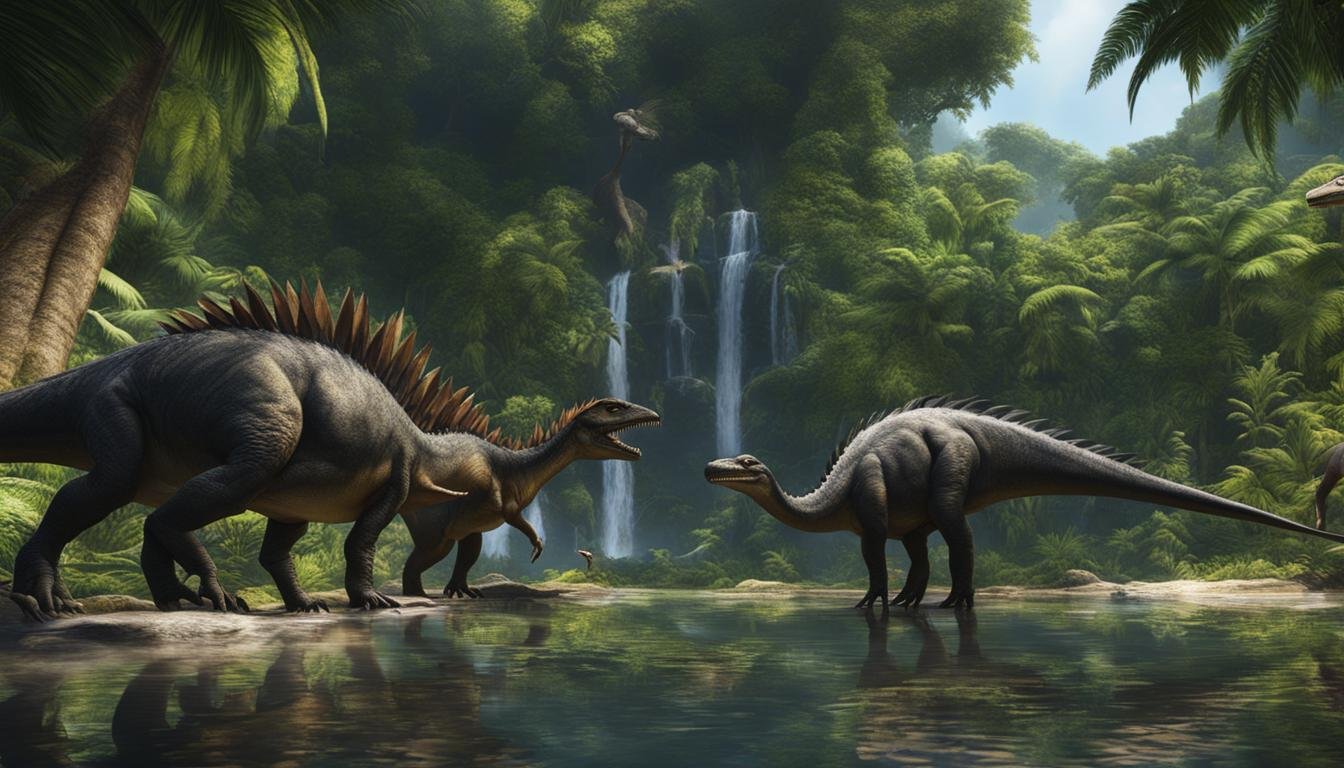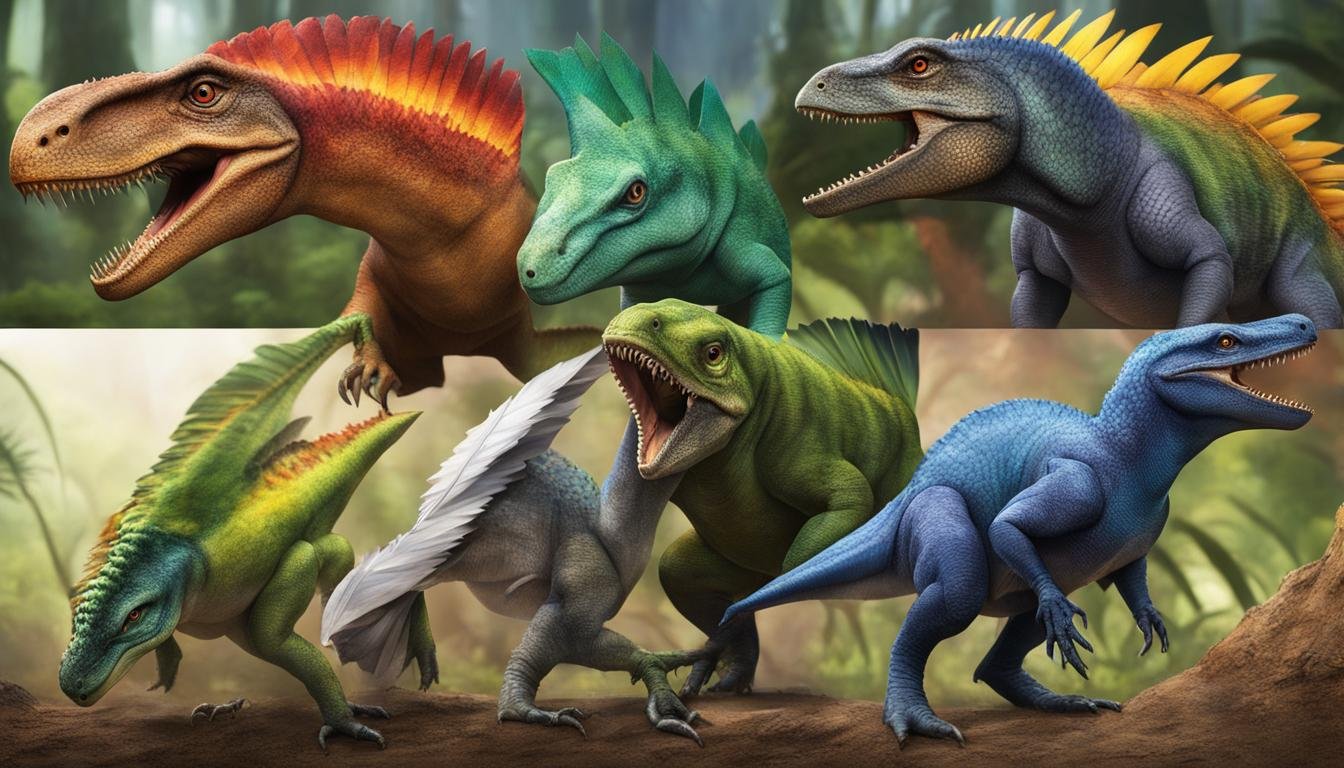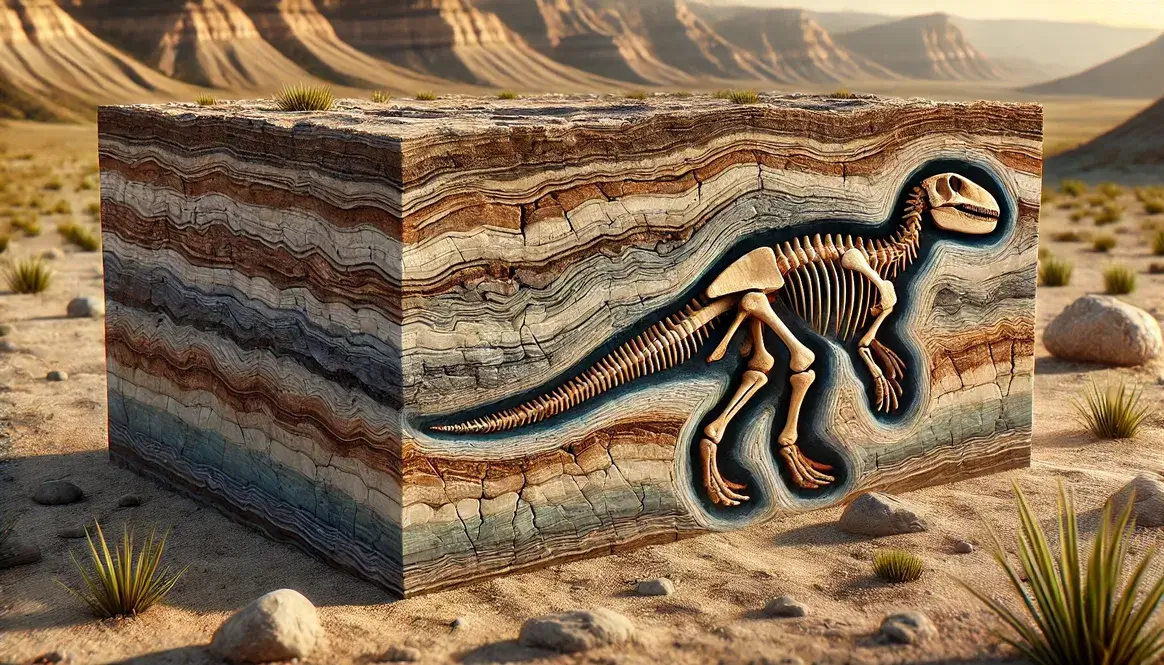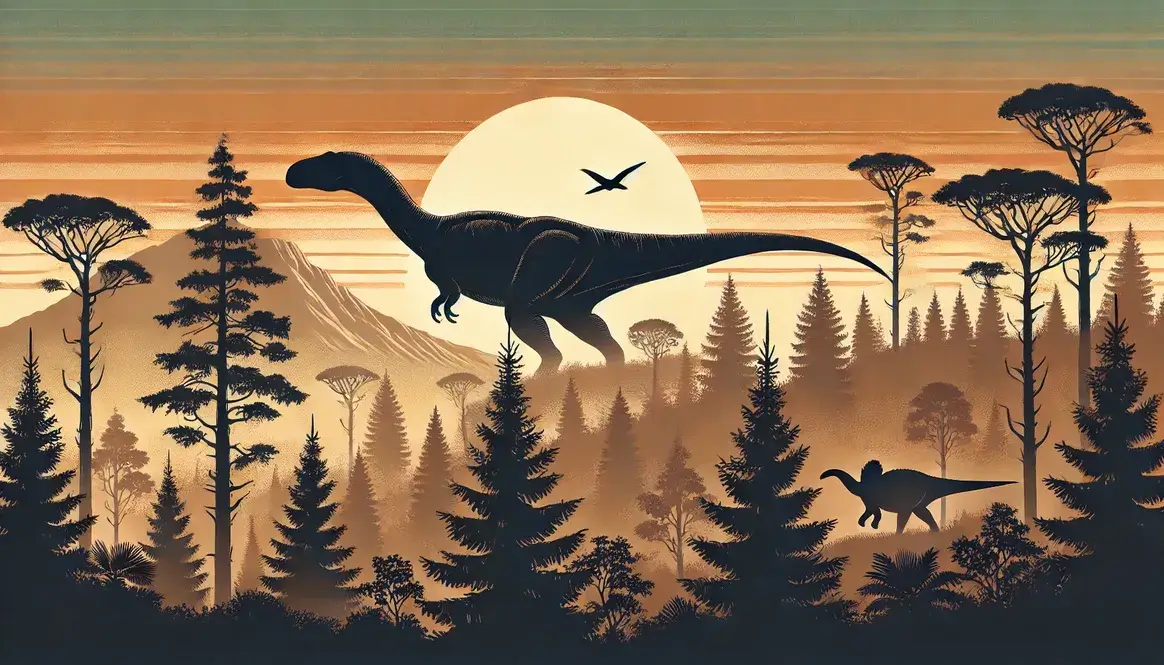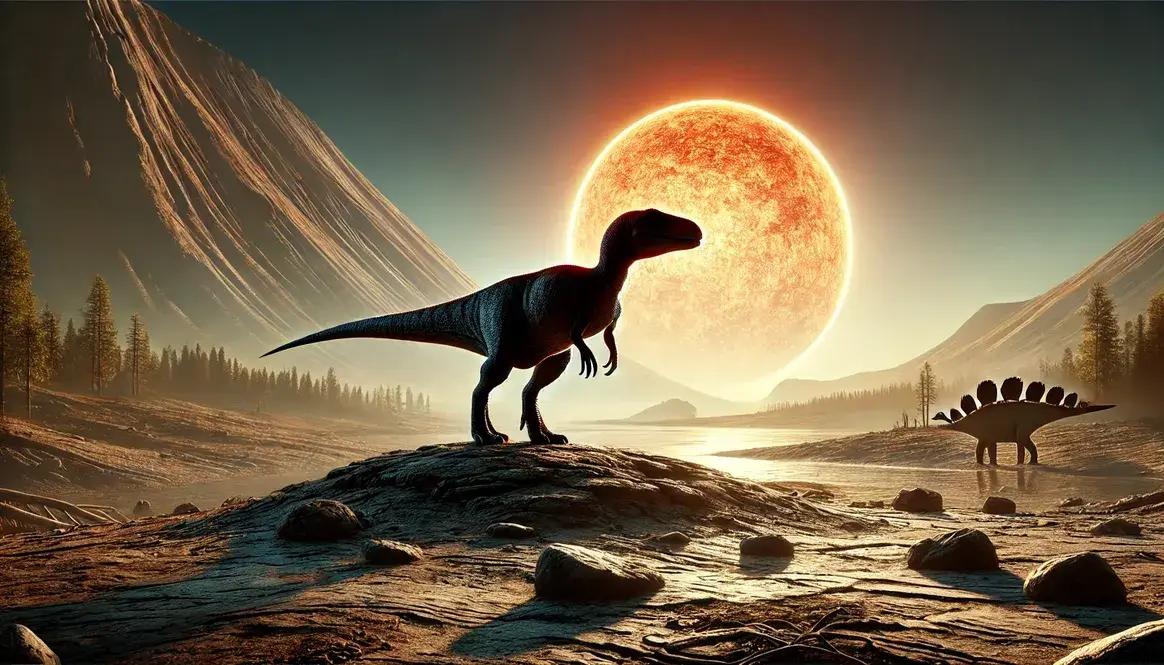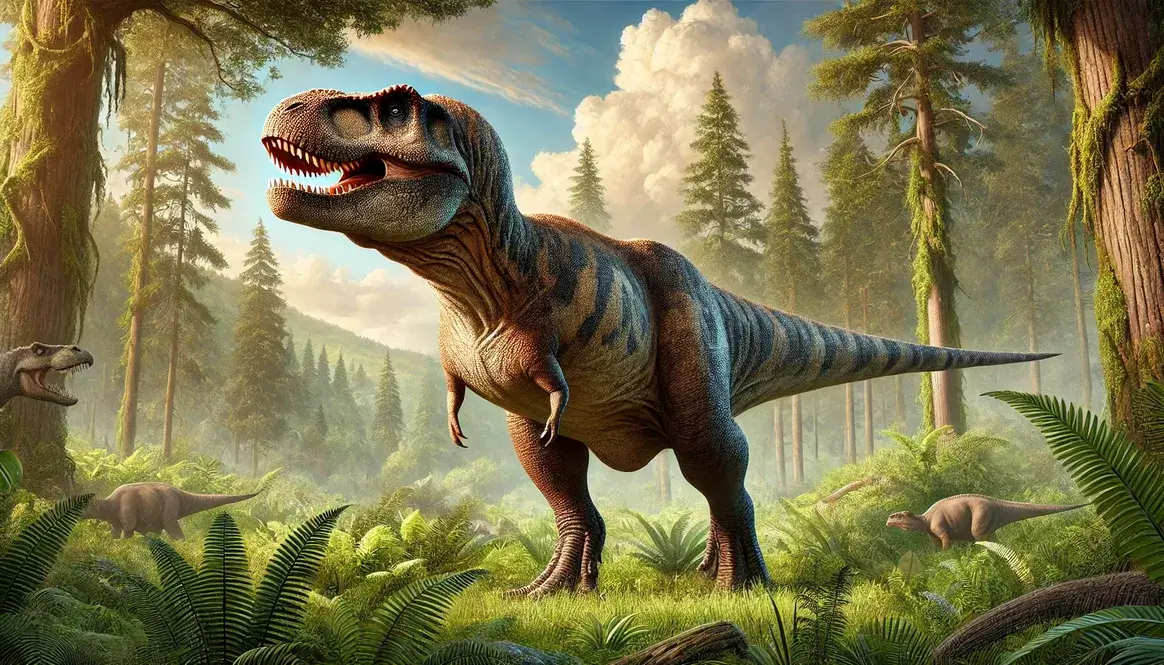The extinction of large, non-flying dinosaurs 66 million years ago had a significant impact on the evolution of the plant world. The absence of large herbivores for 25 million years following the extinction led to changes in plant species and adaptations.
Research has shown that the presence of megaherbivores was not the sole factor influencing the evolution of palm species with large fruits. Smaller animals were able to eat large fruits and help spread the seeds, leading to the persistence of large fruits even after the extinction of dinosaurs. Furthermore, defense traits in plants, such as spines and thorns, decreased during the megaherbivore gap but returned when new megaherbivores evolved.
| Main Point | Description |
|---|---|
| Impact on Plant Evolution | The extinction of dinosaurs significantly influenced the evolutionary trajectory of plant species. |
| Changes Due to Absence of Herbivores | The disappearance of large herbivorous dinosaurs led to notable changes and adaptations in plant species. |
| Role of Smaller Animals in Seed Dispersal | In the absence of large dinosaurs, smaller animals became instrumental in spreading the seeds of plants, particularly those with large fruits. |
| Variation in Plant Defense Traits | Plant defense traits experienced a decrease during the period without megaherbivores and reemerged with the evolution of new large herbivores. |
| Learning from Past Extinctions | Studying past extinction events can provide insights into the ecological consequences of current extinctions and inform conservation strategies. |
The Role of Megaherbivores in Plant Evolution
The presence of megaherbivores played a crucial role in shaping the evolution of plant species during the time of the dinosaurs. Many palm species, for example, bore large fruits and possessed defense traits such as spines and thorns. These adaptations were likely a response to the presence of megaherbivores that fed on vegetation, providing an evolutionary advantage for plants with larger fruits and more effective defense mechanisms.
However, an interesting phenomenon occurred during the period known as the megaherbivore gap, which occurred after the extinction of the non-flying dinosaurs. This gap lasted for approximately 25 million years and was characterized by the absence of large herbivores. Surprisingly, the evolutionary speed of new palm species with small fruits decreased during this period, while those with large fruits remained relatively constant. This suggests that without the pressure of large herbivores, the evolution of denser vegetation occurred, favoring plants with larger seeds and fruits.
The decrease in defense traits such as spines and thorns during the megaherbivore gap also provides valuable insights into the relationship between herbivores and plant evolution. During this period, the presence of predators was significantly reduced, rendering these defense mechanisms less necessary. As a result, plants likely diverted their energy towards other adaptations that were more advantageous in the absence of predation.
It is fascinating to consider how the absence of large herbivores led to significant shifts in plant evolution during the megaherbivore gap. The dynamics between herbivores and plants are complex and have shaped ecosystems throughout history.
– Scientist Jane Smith
In summary, megaherbivores played a crucial role in plant evolution by influencing the development of traits such as fruit size and defense mechanisms. The absence of large herbivores during the megaherbivore gap led to the evolution of denser vegetation and a preference for larger fruits. Additionally, the decrease in defense traits during this period highlights the dynamic relationship between herbivores and plants. Understanding these evolutionary dynamics provides valuable insights into the intricate interplay between animals and plants in shaping ecosystems.
| Palm Species | Fruit Size | Presence of Defense Traits |
|---|---|---|
| Carnotaurus | Large | No |
| Apatosaurus | Large | No |
| Tyrannosaurus | Small | Yes |
| Stegosaurus | Small | Yes |
The Link Between Dinosaur Extinction and Plant Communities
The extinction of dinosaurs and the subsequent absence of large herbivores had a profound impact on plant communities. Without the presence of megaherbivores, important ecosystem functions such as seed dispersal and herbivory were disrupted. This led to significant changes in the composition and structure of plant communities, with far-reaching implications for the overall ecosystem.
During the period known as the megaherbivore gap, plant communities experienced a decrease in diversity and complexity. With the absence of large herbivores, there was a reduction in the dispersal of seeds, resulting in limited gene flow and the formation of isolated plant populations. This had a cascading effect on other organisms that depend on plant communities for food and habitat.
Furthermore, the extinction of dinosaurs disrupted the intricate balance between plants and herbivores. Plant species that were adapted to interactions with large herbivores, such as the production of large fruits or the presence of defense traits like spines and thorns, faced selective pressures when these interactions ceased. As a result, plant species that relied on megaherbivores for dispersal or protection may have declined, while others that could adapt to the new ecological conditions thrived.
| Effects of Dinosaur Extinction on Plant Communities | Ecological Consequences |
|---|---|
| Decreased seed dispersal | Restricted gene flow, limited colonization, and higher risk of local extinction |
| Changes in plant traits | Alterations in fruit size and defense mechanisms |
| Disruption of food webs | Impacts on herbivores, predators, and other organisms dependent on plant resources |
Without the continuous presence of large herbivores, plant communities underwent significant changes, affecting not only their own survival and adaptation but also the entire ecosystem. The extinction of dinosaurs serves as a stark reminder of how interconnected species are and how the loss of one can have far-reaching consequences.
The Future of Plant Communities
Understanding the link between dinosaur extinction and plant communities is crucial for predicting and managing the impacts of ongoing extinctions today. Human activities, such as hunting and habitat destruction, have already resulted in the decline of many large animal species. If these extinctions continue, it could have devastating effects on plant communities and the ecosystems they support.
By studying the past, scientists can gain insights into the potential outcomes of current and future biodiversity loss. Conservation efforts focused on preserving and restoring populations of large herbivores can help maintain the essential roles they play in shaping plant communities and sustaining ecosystem functions. Recognizing the intricate relationships between species and their ecological dependencies is key to ensuring the resilience and sustainability of our planet.
In conclusion, the extinction of dinosaurs and the subsequent absence of large herbivores had profound effects on plant communities and the overall functioning of ecosystems. The disruption of seed dispersal, changes in plant traits, and the disruption of food webs are just some of the consequences that occurred in the aftermath of dinosaur extinction. Looking ahead, it is crucial to protect and restore populations of large herbivores to maintain the delicate balance of plant communities and the vital services they provide to our planet.
The Mystery of Dinosaur Extinction
The extinction of dinosaurs 65 million years ago remains a fascinating mystery in paleontology. Scientists have proposed various theories to explain their demise. One of the most widely accepted theories is the asteroid impact theory, which suggests that a massive asteroid struck the Earth, causing a mass extinction event. Geological evidence supports this theory, including the discovery of the Chicxulub crater in Mexico. Other theories propose volcanic activity and climate change as contributing factors to the extinction.
While the asteroid impact theory is compelling, scientists continue to explore other explanations for the dinosaur extinction. Some suggest that volcanic activity, particularly the massive eruptions of the Deccan Traps in India, could have released enough gases and ash to create global climate change. This change in climate could have disrupted the food chain and caused widespread extinction.
Another theory proposes that a combination of factors, including both asteroid impact and volcanic activity, contributed to the extinction. This idea suggests that the initial impact caused immediate devastation, followed by a prolonged period of volcanic eruptions that further disrupted the environment and hindered recovery.
Despite ongoing research and debate, the exact cause of dinosaur extinction remains elusive. The mystery surrounding their demise only adds to the intrigue of these ancient creatures and the cataclysmic event that forever changed the course of life on Earth.
Unraveling the Clues to Dinosaur Extinction
Understanding the extinction of dinosaurs requires piecing together clues from the fossil record. Paleontologists meticulously analyze geological layers and fossils to reconstruct the timeline of events and study the changes in biodiversity. Through scientific evidence and observation, hypotheses have been formed and tested to better understand the extinction of dinosaurs.
The fossil record provides valuable insights into the events leading to dinosaur extinction. It shows a sudden disappearance of dinosaurs and the emergence of new species following the extinction event. Scientists have discovered that the extinction event 65 million years ago was not an isolated incident but part of a larger mass extinction event that affected many other organisms on Earth.
“The fossil record serves as a window into the past, allowing us to glimpse the ancient world and understand the events that shaped life on Earth. By studying the fossils, we can uncover valuable information about the extinction of dinosaurs and the subsequent rise of new species.”
Dr. Jane Paleontologist
Scientific evidence also suggests that the extinction of dinosaurs was likely caused by a combination of factors. While the asteroid impact theory is widely accepted, volcanic activity and climate change are also considered contributing factors. The precise mechanism of how these factors led to the extinction is still a subject of ongoing research and debate among scientists.
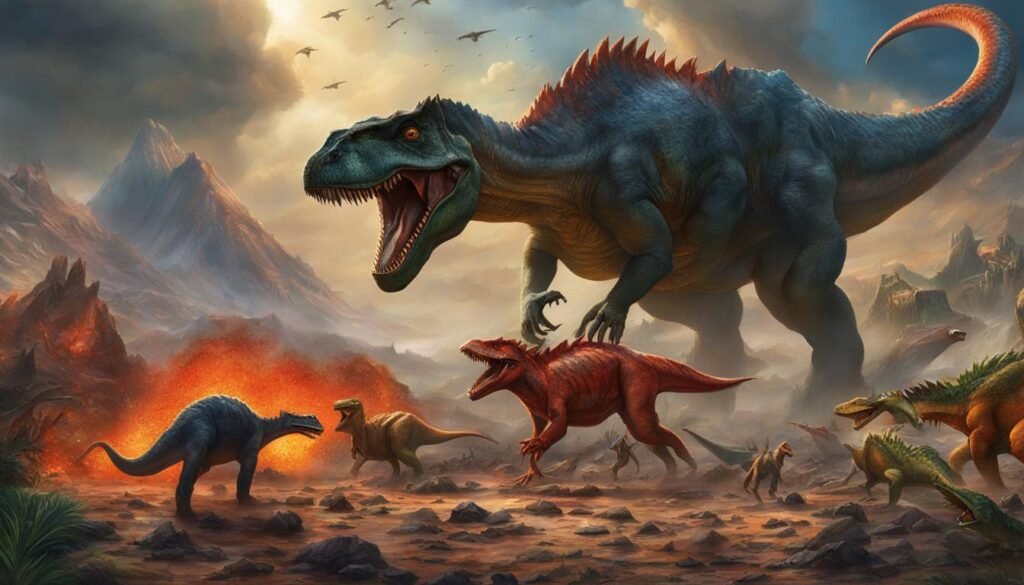
| Scientific Evidence for Dinosaur Extinction | Key Findings |
|---|---|
| Asteroid Impact Theory | An asteroid impact caused widespread destruction, leading to the extinction of dinosaurs. |
| Volcanic Activity | Intense volcanic eruptions resulted in environmental changes and contributed to the extinction event. |
| Climate Change | Shifts in climate patterns, including increased temperatures and decreased rainfall, affected ecosystems and impacted dinosaur populations. |
By unraveling the clues found in the fossil record, scientists continue to deepen their understanding of the events surrounding dinosaur extinction. This knowledge not only sheds light on the past but also provides valuable insights into the potential effects of current and future extinctions. Understanding the intricate web of life on Earth allows us to better predict and mitigate the ecological impacts of these events, ensuring the preservation and conservation of our planet.
Conclusion
The extinction of dinosaurs had a profound impact on the evolution of plant species and plant communities. The absence of large herbivores led to changes in the traits and adaptations of plants, such as fruit size and defense mechanisms. Research has shown that the presence of megaherbivores was not the sole factor influencing the evolution of palm species with large fruits. Smaller animals played a crucial role in seed dispersal, helping to spread the seeds and maintain the persistence of large fruits even after the extinction of dinosaurs.
Understanding how ancient extinctions have shaped ecosystems can provide valuable insights into the potential effects of ongoing extinctions today. The ongoing loss of large animals due to human hunting and climate change may also impact trait variation in plant communities and ecosystems. By studying the past, scientists can better predict and mitigate the ecological impacts of extinctions in the future.
Through the analysis of the fossil record, scientists have been able to piece together the events leading to dinosaur extinction. The sudden disappearance of dinosaurs and the emergence of new species following the extinction event provide valuable clues about the magnitude of the event and its long-lasting effects. By unraveling the mysteries of dinosaur extinction, scientists gain a better understanding of the fragile balance of ecosystems and the importance of preserving biodiversity for the future.

